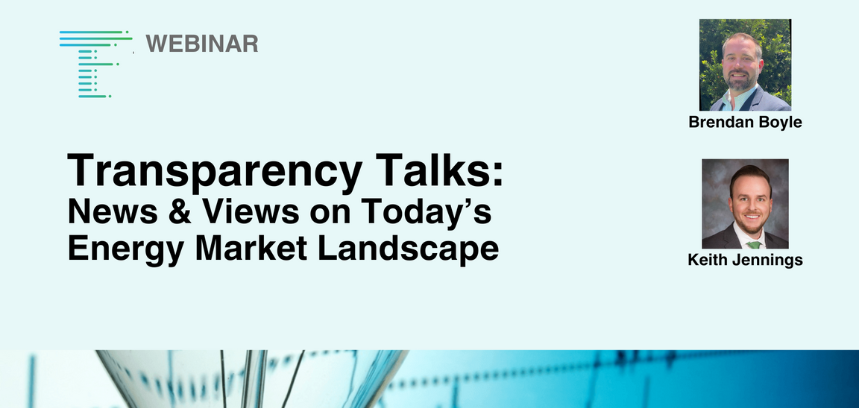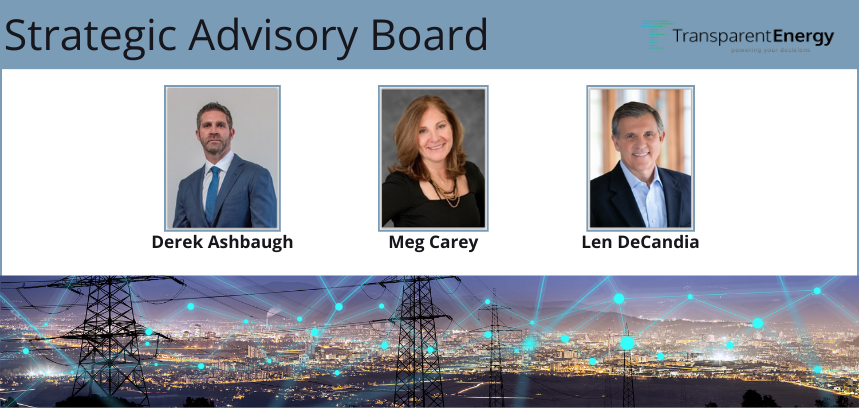By Paul Shagawat, Co-Founder and Managing Director, Transparent Energy
Customers of Transparent Energy and our regular readers have heard us – and yes, often me, with the loudest voice – sing the praises of using online auctions to get the best prices available for electricity, natural gas, and renewables anywhere in the market.
The story goes like this: Transparent Energy reliably maximizes the number of qualified retail energy suppliers participating in a procurement event. They bid ferociously against each other in a live auction to win the energy buyer’s contract. Because we have developed, and operate, this best-in-class online auction platform, and employ expert staff and a proven process to optimize its use, Transparent Energy reliably delivers 7-8% savings over other energy procurement methods.
End of (that) story.
Today, I want to tell a different story, one best suited for larger energy buyers – those with minimum annual loads of 15,000 MWh (15 million kWh) and/or 150,000 Dth (and often way more). Here is an approach that starts with an auction, but continues with a more nuanced approach to buying energy over time as a “managed service.”
Reducing Energy Risk
In our experience, even customers with the largest energy loads, as in hundreds of millions of kWh and over a billion cubic feet (BCF) of natural gas (150,000 Dth or more), love using our auctions. It’s just that they don’t buy all their energy in a single sitting.
That’s because the risk is too great.
Just as other large investors do, businesses with massive energy loads – and we serve many such customers – prefer to tap into the power of dollar-cost averaging, buying their electricity and natural gas over time to spread out the financial risk that comes with this major expense in their operating budgets. Investopedia explains dollar-cost averaging as follows:
- Dollar-cost averaging involves investing the same amount of money in a target security at regular intervals over a certain period of time, regardless of price. By using dollar-cost averaging, investors may lower their average cost per share and reduce the impact of volatility on their portfolios.
So how does Transparent Energy take this tried and true investment method and turn it into a savings and risk reduction tool for your operations? Let the auction begin!
Reducing a Supplier’s ‘Cost to Serve’
When we work with large energy buyers who don’t want to fix their entire load, i.e., purchase all their energy for years to come on a single day in the market, we still recommend an auction as a valuable first step.
The auction still provides all the benefits mentioned above, but the extra advantage it offers very large energy buyers is a foothold in the market, with a reputable supplier, upon which additional hedging can take place.
Let me explain.
First, the competitiveness of the auction drives down suppliers’ margins. That’s because suppliers are forced to continue lowering their price vs. other competitors in order to win the business. The auction is a margin-compression machine, helping the buyer establish an energy contract on the right footing, i.e., with a minimum cost-to-serve.
But unlike smaller buyers, who may pursue a fully fixed (i.e. “all in”) 12, 24, or 36 month contract, a larger buyer may choose to use the auction to fix only a fraction, locking in a price for, say, 25% of their load. Additionally, they may go out much longer, pursuing terms of 48 or 60 months or even higher.
The Power of Dollar-Cost Averaging
So why would they do this? Going long allows large energy buyers to sign with a supplier once, and not have to go through the time, hassle, and legal complexity of entering into a new energy contract with possibly a new supplier, every one, two, or three years. And, by fixing only 25% of their energy cost, they allow Transparent Energy to continue purchasing energy on their behalf throughout the entire (longer) term.
This is powerful, because everyone at Transparent Energy, from the pricing desk and market intelligence team to operations and business development, is an experienced energy market expert. We monitor the market, including energy futures, daily, and are always looking for buying opportunities. And when a large customer engages us in a managed service relationship, we can act on those opportunities.
In practice, this means we can set triggers (automatically procuring energy at a certain price point) and collars (procuring based on an established pricing floor and ceiling), while also leveraging our wholesale market expertise, which helps us see what retail suppliers are paying for energy, enabling us to ensure our customers are getting a fair price.
Even as I write this, our team is seeing a future seasonal strip that is trading at a very low price. Under a managed services agreement, Transparent Energy can act on our client’s behalf to snap up this super-affordable strip. And it can be done in an instant: no extra paperwork, meetings, and delays that turn great opportunities into missed ones.
Play out this scenario again and again, and a large energy load begins to get filled in, not with one big buy on auction day, but over time, over the entire length of the contract, an approach that spreads risk and maximizes opportunity.
CFOs value this approach, because dollar-cost averaging is well understood. CFOs for large energy-buying entities are much less interested in hoping for a “big score” when procuring energy than they are in a process with guardrails that respects and minimizes risk. Energy purchased over time in this manner delivers a commodity purchased at various price points, which, averaged out over the duration of the contract, amounts to a reasonable cost within predicted parameters that minimizes upside risk that can kill a business, something especially valued by publicly-traded and public sector companies.
It all starts with an auction, but energy as a managed service is an ongoing journey – one with many benefits for large energy buyers.





